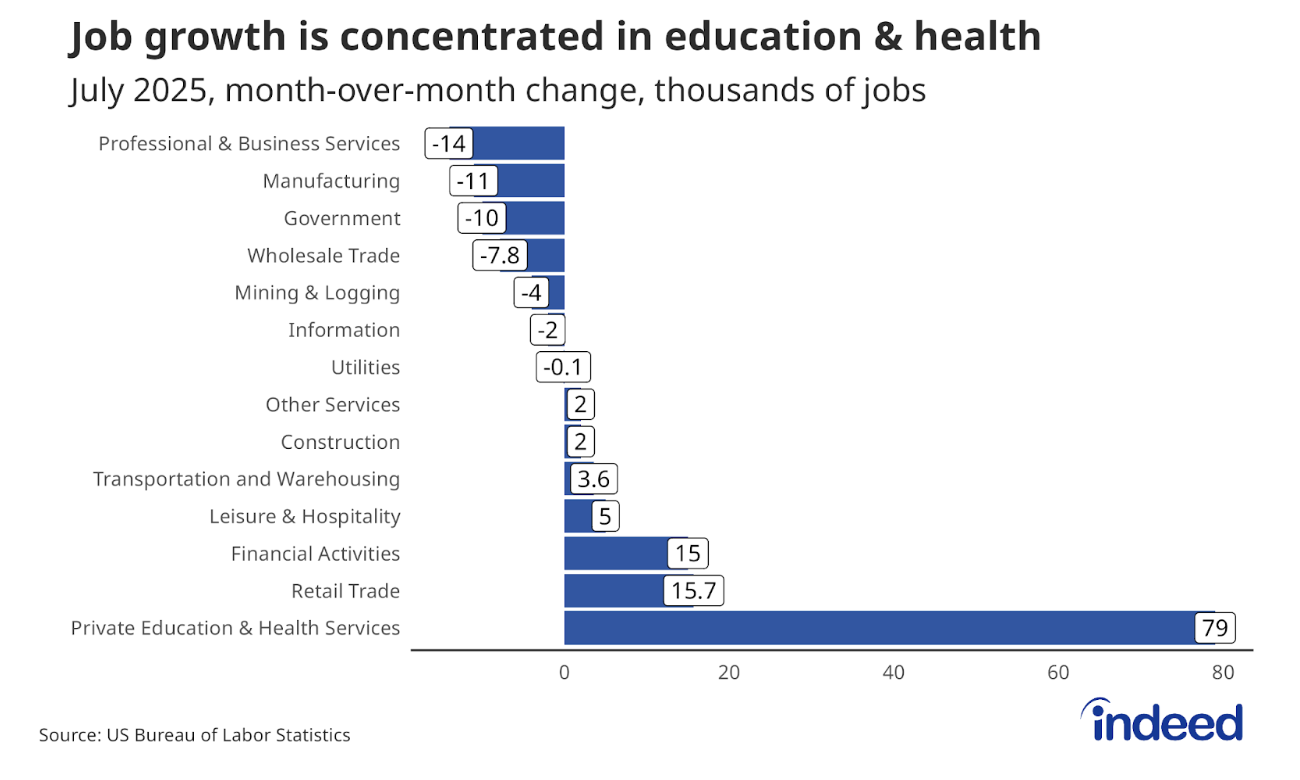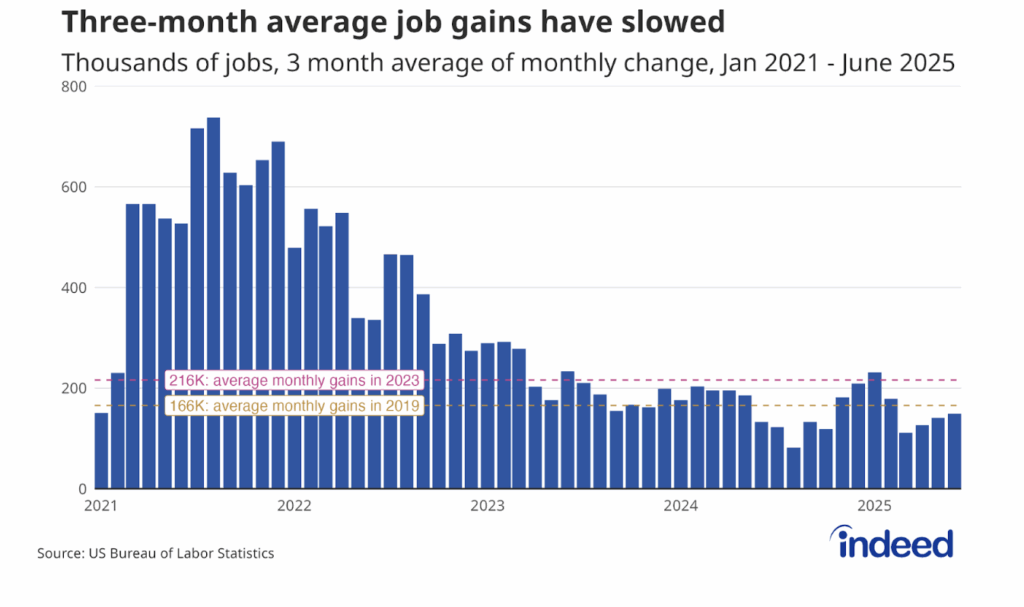Key points:
- US employers added just 73,000 jobs in July, according to the Bureau of Labor Statistics, and growth from the prior two months was revised down by a combined 258,000 jobs.
- The healthcare and social assistance sub-sector accounts for just 14.6% of total jobs in the economy, but almost half (48.8%) of all employment growth in the US has occurred in this sub-sector over the past year.
- The unemployment rate rose slightly to 4.2%, from 4.1% in June.
Today’s jobs report officially ripped the mask off the market. The underlying weakness that had been apparent just under the surface came into full view after major downward revisions showed the past few months of seemingly steady jobs growth to be basically nonexistent. Entering 2025, the jobs market was largely held up by a three-legged stool of healthcare and social assistance, leisure & hospitality, and government hiring. Now, only healthcare and social assistance remain standing and steadily adding jobs — but it’s difficult to hold the rest of the market up with one leg.
Contrary to the expansionary norm of the last five years, today’s report showed the addition of just 73,000 jobs in July — below the level needed to keep up with population growth. Additionally, the BLS announced large negative revisions to the reports from May and June, showing a combined addition of just 33,000 jobs over the two-month period, compared to the initial estimate of 291,000 jobs.
The sectoral breakdown from the jobs report is especially striking, with private education and health services adding 79,000 jobs, while other sectors, including professional and business services, manufacturing, and government, lost more than 10,000 jobs each. While the healthcare and social assistance sub-sector accounts for just 14.6% of total jobs in the economy, 48.8% of all employment growth in the US has occurred in this sub-sector over the past year. More than three-quarters (78.6%) of employees in the sub-sector are female, meaning that a staggering 35.1% of all employment growth in the US over the past year has been amongst female employees in healthcare and social assistance.
If your skills align with healthcare, education, or state and local government, it may be easier (which is not the same as easy) to still find opportunities in this job market. However, if your skills align more closely with manufacturing, financial activities, or trade and transportation, the reality may feel quite different. The increasing concentration of jobs in certain sectors and an outright contraction of jobs in many others does not bode well for the market going forward. Unemployment remains low, and layoff activity is still muted, but it’s less clear than ever how much longer those saving graces can last.



